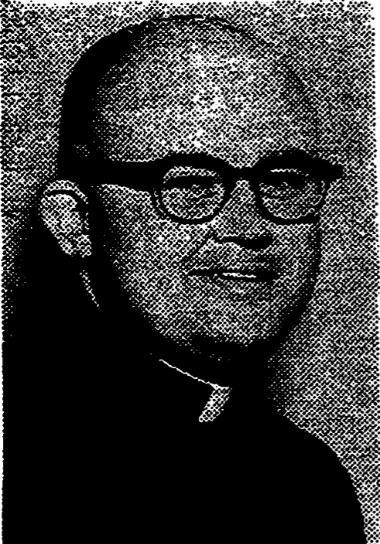|
One year after releasing names of abusive clergy, Baton Rouge Diocese adds two more
By Andrea Gallo
At the one-year anniversary of releasing a list of clergymen credibly accused of abuse, the Catholic Diocese of Baton Rouge has added two more priests who served in Ponchatoula to their list of those with credible claims against them. Diocesan officials announced Wednesday morning that they were adding two priests from religious orders who served in the diocese to their list, which has grown since its initial release a year ago. The additions of the Rev. Richard Raphael Archer, a Dominican friar, and Rev. Lawrence Dark, a Congregation of the Holy Cross priest, bring the total of Catholic clergy members who worked in and around Baton Rouge and were credibly accused of abuse to 45. Both priests’ history of abuse allegations were first revealed by their religious orders over the past year, and both are already listed on the Archdiocese of New Orleans’ credibly accused clergy list as well. As other lists have grown, so has the list from the Diocese of Baton Rouge, which initially included 37 clergy members and has accumulated more based on lists from other dioceses and religious orders. Despite 178 dioceses across the country releasing names of more than 6,700 predator priests, it's often hard to track how priests moved from diocese to diocese amid allegations of abuse. Catholic officials have not coordinated their list releases with one another, meaning a diocese may not know if a priest who served there has been named on a list of abusive clergy members that another diocese — particularly one that's distant — releases. ProPublica released a national database this week to make it easier to search and cross-reference every clergy member included on abuse lists across the country, while the website Bishop Accountability has also long maintained a database that chronicles the movements and pastoral assignments of predatory priests. That kind of shuffling prompted national outcry last year involving Archer, a retired Dominican priest. The Dominican Province of St. Joseph reported that Archer was removed from ministry in 2002 after abuse complaints, but the Survivors Network of those Abused by Priests last March exposed his residence at a Catholic priory connected to a school in New Orleans. Archer was assigned to a Metairie-based Dominican province when he was removed from public ministry, and a board that reviewed the Dominican’s personnel files determined he was the subject of a credible “allegation of sexual abuse of a minor.” The Advocate's archives show that he worked at St. Joseph’s Catholic Church in Ponchatoula in the 1990s. It’s unclear when he is alleged to have committed abuse. Public records list him as also having worked at St. Elizabeth's Church in Elizabethtown, Tennessee and having lived with the Dominican Friars of Raleigh in North Carolina. After SNAP revealed his residence at St. Dominic’s Priory in Lakeview, New Orleans Archbishop Gregory Aymond announced that he was telling the Dominican order that Archer would no longer be allowed to live there. Archer is believed to still be alive at 89 or 90 years old, but attempts to reach him for this story have been unsuccessful. As for Dark, the Congregation of Holy Cross listed him in June of last year as having been credibly accused of abuse. The Archdiocese of New Orleans followed suit shortly after this newspaper reported on the Holy Cross list, adding Dark to its abusive clergy list. Dark was the chaplain at Warren Easton Senior High School in New Orleans and also served as assistant pastor at Sacred Heart of Jesus Church. He also spent time in Santiago, Chile, where he was assigned to St. George’s College. But he moved closer to Baton Rouge as part of a mission to establish homes for wayward boys in Louisiana. He opened the Reynolds Institute in the 1960s in New Orleans, and then moved the growing facility to Albany in 1977. A few years later, the home grew again, to become the 60-acre Bill Anderson Boys Town in Ponchatoula. The Diocese of Baton Rouge referred to it as the William E. Anderson Memorial Boys Town in its list of Dark’s pastoral assignments. While Dark was publicly promoting a mission to turn troubled boys into men, he was also allegedly abusing some of them behind closed doors. The Congregation of Holy Cross reported that the abuse allegations it received against Dark were based on his time in Louisiana in the 1960s and the 1970s. Holy Cross officials said they did not receive the allegations against Dark until after his 1984 death, however. Two years after he died, the Ponchatoula Times published a glowing recap of how Dark had built up a sprawling home to help boys aged 13 to 18 with nowhere else to go. “The Reynolds Story,” as it was titled, said Dark worked so hard over the past 31 years that he had neglected his health and died at 59. “Today we are confident that we are providing an excellent program for our troubled young clients and have great future expectations and are full of enthusiasm,” reads the Ponchatoula Times piece from Dec. 4, 1986. “Our only regret being that Father Dark did not live long enough to see his efforts culminate in an objectively judged successful child treatment facility.” Ten years after his death, the Congregation of Holy Cross reported receiving its first abuse allegation against Dark. The congregation received a second in 2008.
|
.
Any original material on these pages is copyright © BishopAccountability.org 2004. Reproduce freely with attribution.


